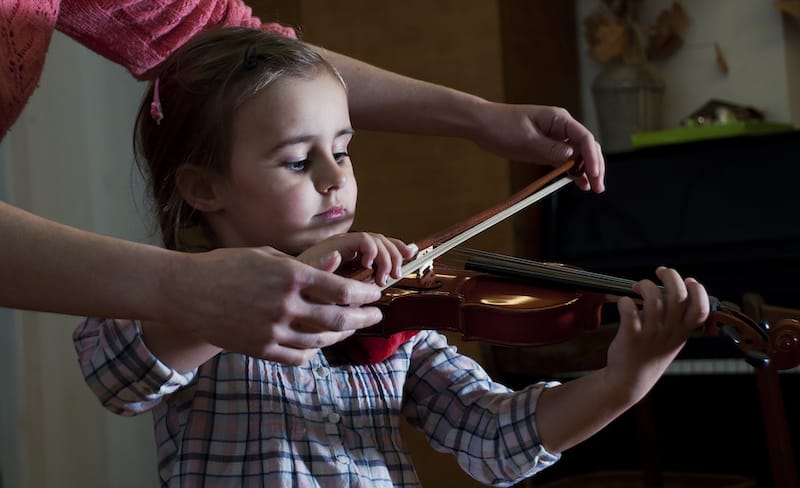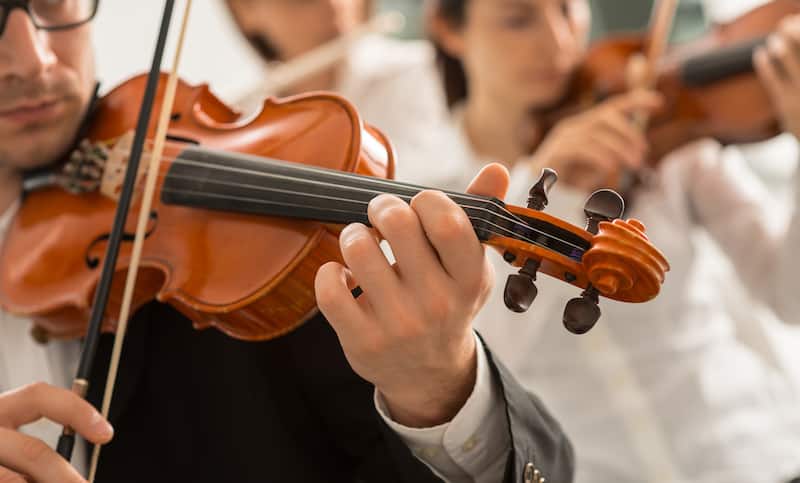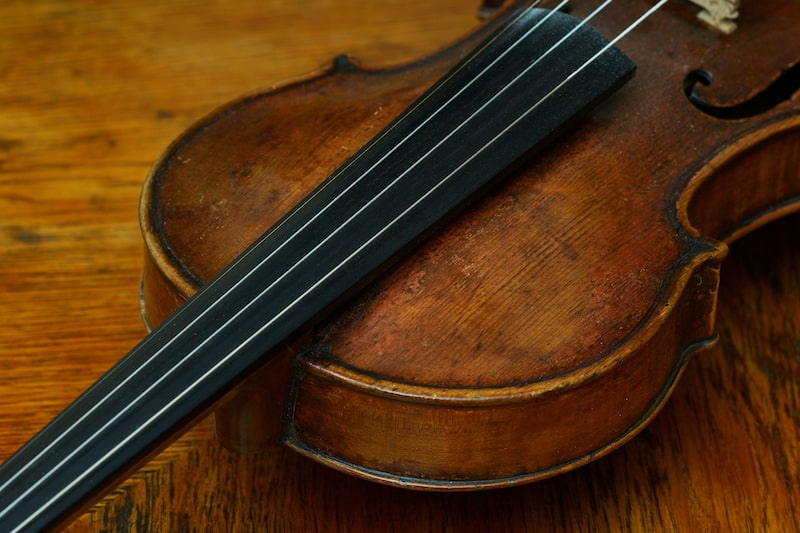The violin is often considered a difficult instrument and can take a lifetime to perfect. However, students can reach basic proficiency in a year or less, and can start playing simple songs within a matter of weeks.
In this article we will look at the different phases of violin playing, and ways to improve your practice to become the best violinist possible.
Beginner Level

As a beginner, a student will usually feel comfortable with the instrument and learn to play simple songs within a year.
The most straightforward way to start your violin journey is to study with a violin teacher.
Many of the intricacies of violin playing are difficult skills to self-regulate, including positions and efficiency of motion.
It can be extremely helpful to have a set of trained and experienced eyes watching for typical mistakes or risks.
A teacher can also guide you through a personalized program of technique and repertoire to help you achieve your musical goals.
There are some self-teaching methods available, but generally require some music theory knowledge, and a particularly hobbyist mindset.
If you attempt this route, be very careful with your instrument maintenance, and perhaps find a violin teacher willing to offer check-ups to make sure you’re on the right path.
Beginner Skills
Basic violin cleaning and maintenance helps keep the instrument in good condition, and includes loosening and tightening your bow, checking your bridge’s angle, and if your teacher deems you ready, tuning your instrument.
Good posture and proper left hand technique help set a foundation for more advanced playing and help prevent pain later on.
A solid, effective bow hold and the ability to draw a straight bow will ensure a good sound heading into intermediate studies.
Reading music should be tackled as early as possible, though, for early pieces, reading can be assisted with the use of finger numbers.
The main goal of learning an instrument is to play music, and you should learn how to play simple songs, such as early Suzuki book songs, or beginning fiddle tunes.
First position scales will help you learn to navigate the fingerboard and develop smooth, focused sound.
Intermediate Level

After a year or so, you will begin to acquire some new, fancier techniques, and begin to find your personalized violin sound.
Some of the intermediate skill-set includes early vibrato, ornaments like trills or turns, shifting, and more delicate bow techniques.
During the intermediate stage, students’ strengths and weaknesses often become more pronounced, and some new techniques will be easier to acquire than others.
For instance, some students find vibrato a natural skill to acquire, and some will struggle to perfect theirs until later stages.
Find what works well for you, and what techniques you enjoy playing.
At this point, scales get more complicated, involving shifting and higher positions.
Double-stop scales, using notes on two strings at once, can also be added, which help with a number of skills, including chord-improvisation and fingerboard geography.
For the hobbyist-minded student, this level of playing is an opportunity to explore music on your own outside assigned repertoire.
The more you play and experiment with music (while maintaining solid technique), the more you learn.
Intermediate Techniques
Left hand technique should become more natural, and the student should think about hand frames instead of just individual fingers.
Vibrato should be developed to make your playing even more dazzling.
Advanced bow techniques like off-the-string strokes should be added and developed.
Extra attention should be paid to intonation as you develop your listening abilities.
Note reading should become natural, and you should be able to sight-read simple and moderately difficult songs without looking at finger numbers.
Advanced and Beyond

After maintained, diligent practice over a number of years, you will move into advanced violin playing.
Repertoire will become more accessible, and an advanced violinist will usually reach a point where nearly any piece is possible with enough practice and dedication.
A very important pillar of advanced violin practice is the discipline of scales.
Scales help maintain relaxed playing, increase left-hand dexterity, right arm control, and intonation.
Your personal scale-work and technique regimen will differ from others’, though there will be a few common traits.
You should include some precision exercises such as Sevcik or Shradieck, 3 or 4 octave scales, 3 or 4 octave arpeggios, and double stop scales including thirds, sixths, octaves, fingered octaves, and tenths.
Once in the advanced stage, your skills become somewhat set in stone, but practice is still a life-long pursuit.
The legendary cellist Pablo Casals was reportedly asked, at the tender age of 93, why he still practiced.
His response was, “because I think I’m making progress.”
Tips for Learning Faster

1. Stay Relaxed
When you’re first attempting to ride a bike or learning to drive a car, the tendency is to grip the handlebars or steering wheel tightly.
Unfortunately this reaction limits your ability to react or adjust, and can create aches and pains.
Our hands are naturally inclined to grab objects, and when playing the violin we must seek to untrain that habit.
When playing a section faster than you’ve attempted it before, it is important to be as relaxed as possible.
If you find that relaxing messes you up, slow down and practice it again from a slower speed.
2. Practice Every Day, or Nearly Every Day
Like any skill, learning the violin is a daily pursuit and devotion.
A small amount of practice every day is more useful than a day or two of cramming practice before a lesson, and keeps your playing in better shape.
If you have to miss a day, or even a week or month, make sure that you come back to the instrument knowing that the practice session won’t go as well as usual.
I had an injury while pursuing my Master’s degree which, for 8 weeks, took away my ability to walk, stand, or play the violin.
I learned a lot about violin playing during the recovery, but one of the most important lessons was how to practice after a break:
Start slow, focusing on things feeling relaxed and comfortable, and making a solid sound.
Don’t expect things to snap back into place, but if you give them time they will come back even stronger than before.
3. Practice Scales and Technique as Much as you Practice Songs
Scales may seem monotonous and boring, but they are the building blocks of music.
Every great classical, jazz, or fiddle violinist has practiced scales in some form, and there is no better way to truly learn your instrument.
4. Work Through Etude Books
Etudes typically center around only one or two techniques, helping to develop skills in a focused and specific manner.
Here is a list of increasingly difficult etude collections, though there are many other books available:
5. Listen to as Many Violinists as Possible
The aim of a violin student should always be to craft a sound that they enjoy listening to themselves.
One way to do this is to listen to as many recordings and performances as possible to help develop your ideal violin sound.
A few of my favorite violinists include:
- Mischa Elman
- Gidon Kremer
- Hilary Hahn
- Leila Josefowicz
- Michael Rabin
- David Oistrakh
- Lisa Batiashvili
- Augustin Hadelich
- Ginette Neveu
- Jascha Heifetz
- Midori Goto
6. Perform as Much as Possible
The ultimate point of learning music is to perform, either by yourself or in collaboration with others.
Even if you don’t have a stage available to perform on, record yourself, livestream to family or friends, and perform for whoever you live with!
Conclusion
So, how long does it take to learn the violin?
Well the answer depends on your expectations and goals.
The violin has a reputation for being rather difficult, but various levels of proficiency can be achieved in a matter of months.
The violin is an incredibly rewarding instrument to learn, teaching you focus, dexterity, and the ability to make beautiful music.
Whether you dream of being a concert soloist or merely wish to dabble in a new instrument, I hope this guide has provided some clarity on your approach.

